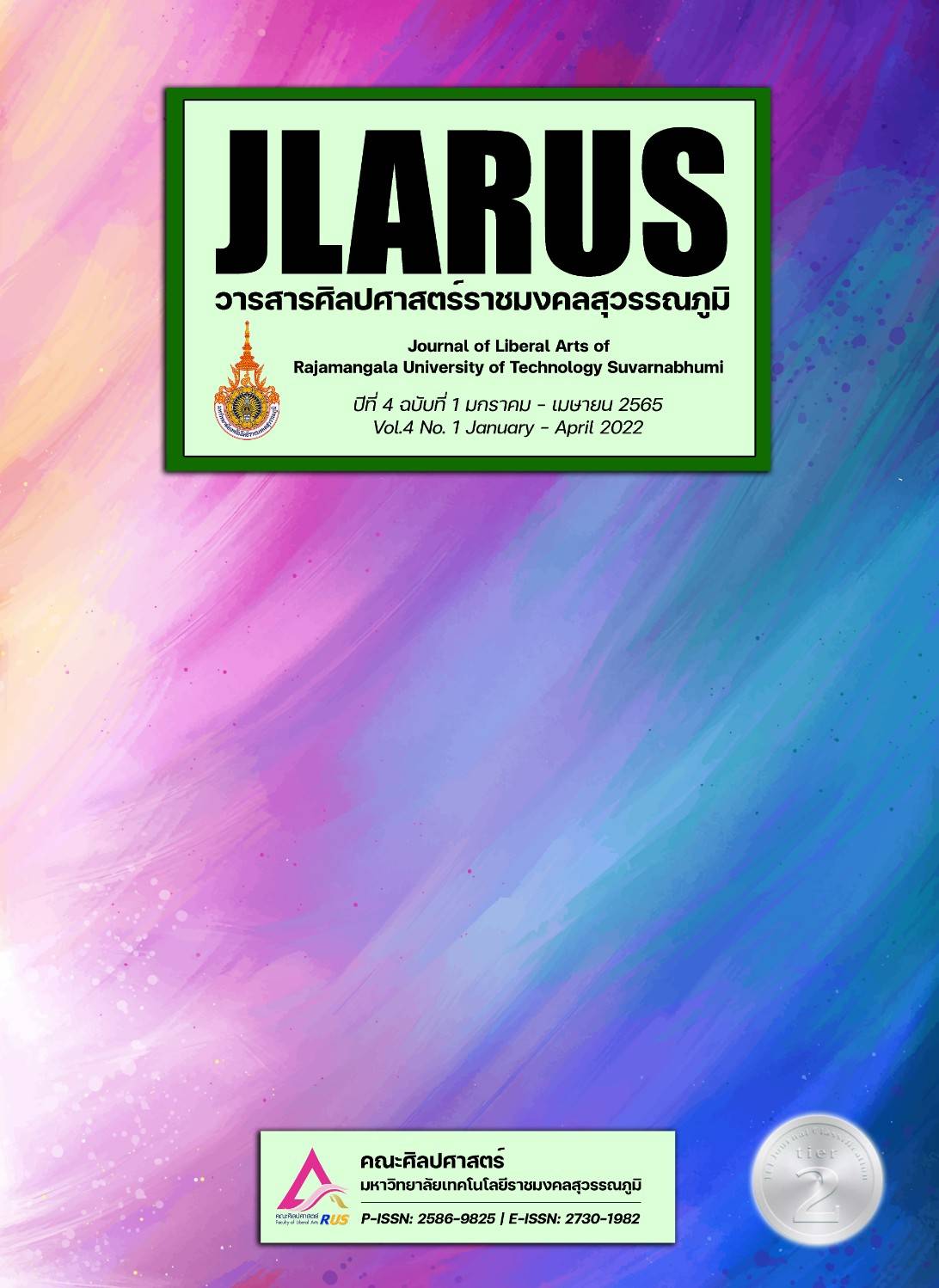CREATIVE TOURISM ROUTE MODEL BASED ON CULTURAL WISDOM OF BAN DON MANAO TAI DAM ETHNIC SUPHANBURI PROVINCE
Main Article Content
Abstract
The objectives of this article are to 1) study tourists' interest in cultural activities of ethnic group in Suphanburi province; 2) study the cultural wisdom of Ban Don Manao Tai Dam, Suphanburi province and 3) design a creative tourism route of the Ban Don Manao Tai Dam ethnic, Suphanburi province. This research is a combined method research. Data collecting tool was questionnaires for quantitative research. The sample group used in the study was 400 tourists chosen by accidental sampling method. The qualitative data collecting tools was the in-depth interview which the key informant groups were government sector, the private sector, and the community sector chosen by specific sampling method for 15 people. The statistical data used for analysis were frequency, percentage, content analysis and presented in a descriptive form.
The research resulted found that: 1) Tourists travelling to Suphanburi province are interested in creative tourism of ethnic group comprising lifestyle and ethnic background followed by cultural tradition and the wisdom of ethnic groups. 2) Cultural wisdom of Ban Don Manao Tai Dam community comprises watermelon-patterned cloth/sarong weaving, pillow pattern embroidering, silver buttons making, Dok Piew embroidering, local food cooking and wicker handicraft craving. 3) Creative tourism routes based on cultural wisdom of Tai Dam ethnicities can be designed in 2 styles namely one-day plan or two-day and one-night program of Visiting Land of Faith, Culture of Belief and Tai Dam Spirit.
Article Details

This work is licensed under a Creative Commons Attribution-NonCommercial-NoDerivatives 4.0 International License.
References
กระทรวงการท่องเที่ยวและกีฬา. (2562). สถิตินักท่องเที่ยวภายในประเทศ ปี 2561 (จำแนกตามภูมิภาคและจังหวัด). สืบค้น 25 มีนาคม 2562. จาก https://www.mots.go.th/ more_news.php?cid=438&filename=index.
กรมการท่องเที่ยว. (2560). คู่มือการบริหารจัดการแหล่งท่องเที่ยวเชิงสร้างสรรค์. กรุงเทพมหานคร: กระทรวงการท่องเที่ยวและกีฬา.
นฤมล มูลกาศ. (2557). การวิเคราะห์รูปแบบการดำเนินชีวิตของผู้ซื้อสินค้าแฟชั่นทางอินเตอร์เน็ตในเขตอำเภอเมือง จังหวัดเชียงราย. วารสารวิทยาการจัดการ มหาวิทยาลัยราชภัฏเชียงราย, 9(1), 80-101.
มิ่งสรรพ์ ขาวสะอาด. (2564). อนาคตฐาน การท่องเที่ยวไทย หลังโควิด. สืบค้น 12 กันยายน 2564. จาก https://www.bangkokbiznews.com/news/detail/926948.
วิลาสินี เหมหงส์, คนึงนิตย์ ไสยโสภณ และ บุญยัง หมั่นดี. (2561). การศึกษาภูมิปัญญาท้องถิ่นเพื่อการท่องเที่ยวในจังหวัดสุรินทร์. วารสารมนุษยศาสตร์และสังคมศาสตร์ มหาวิทยาลัยราชภัฏสุรินทร์, 19(1), 59-68.
สำนักงานจังหวัดสุพรรณบุรี. แผนพัฒนาจังหวัดสุพรรณบุรี 2561-2564. สืบค้น 12 กันยายน 2564. จาก https://ww1.suphanburi.go.th/strategic//?page=1.
สำนักงานคณะกรรมการพัฒนาการเศรษฐกิจและสังคมแห่งชาติ. แผนพัฒนาจังหวัดสุพรรณบุรี 2561-2564. สืบค้น 12 กันยายน 2564. จาก http:// www.suphanburi. go.th/suphan/ DocOrderDesc.php?id=238.
สุดแดน วิสุทธิลักษณ์, พิเชฐ สายพันธ์, อรอุมา เตพละกุล และ ธีระ สินเดชารักษ์. (2556). การท่องเที่ยวเชิงสร้างสรรค์ (Creative Tourism). กรุงเทพมหานคร: องค์การบริหารการพัฒนาพื้นที่พิเศษเพื่อการท่องเที่ยวอย่างยั่งยืน (องค์การมหาชน).
สุดแดน วิสุทธิลักษณ์. (2558). องค์ความรู้ว่าด้วยการท่องเที่ยวเชิงสร้างสรรค์ : คู่มือและแนวทางปฏิบัติ. สืบค้น 25 มีนาคม 2562 จากhttps://socanth.tu.ac.th/wpcontent/uploads/2017/08/ suddan-2558.pdf.
อมรรัตน์ อนันต์วราพงษ์. (2560). หลักการวิจัยเพื่อพัฒนาผลิตภัณฑ์ภูมิปัญญาไทย. กรุงเทพมหานคร: สำนักพิมพ์แห่งจุฬาลงกรณ์มหาวิทยาลัย.
อิสรีย์ ติยะพิพัฒน์. (2559). แนวทางการพัฒนาการท่องเที่ยวเชิงสร้างสรรค์สำหรับนักท่องเที่ยวชาวต่างชาติริมสองฝั่งแม่น้ำปิง. (วิทยานิพนธ์ปริญญามหาบัณฑิต). พะเยา: มหาวิทยาลัยพะเยา.
อัศวิน แสงพิกุล. (2556). ระเบียบวิธีวิจัยด้านการท่องเที่ยวและการโรงแรม. กรุงเทพมหานคร: สำนักพิมพ์มหาวิทยาลัยธุรกิจบัณฑิตย์.
เอื้อมพร หลินเจริญ. (2554). เทคนิคการวิเคราะห์ข้อมูลเชิงคุณภาพ. พิษณุโลก: คณะศึกษาศาสตร์ มหาวิทยาลัยนเรศวร.
Richards, G. and Raymond, C. (2000). Creative tourism. ATLAS News. 23, 16-20.
Duygu, S., & Duygu, U. (2010). Creative Tourism and Emotional labor: an investigatory model of possible interactions. International Journal of Culture Tourism and Hospitality Research 4(3), 186-197.
Yamane, T. (1973). Statistics : An Introductory Analysis. New York: Harper and Row Publication.


